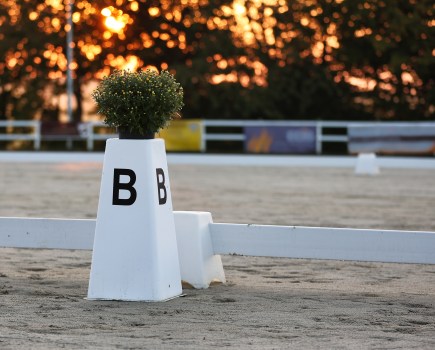Every horse moves differently so it’s important to know what paces should ideally look like and also how to improve them if they’re not quite cutting the mustard. Here Anna Ross-Davies talks about what she looks for in a horse’s paces and how to develop them over time.
The basic foundations – what to look for
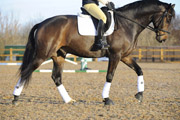 Walk
Walk
The walk should have a really regular four-beat rhythm and footfall, and you want to be able to see a strong V shape when the outside hind and inside fore come together. I would avoid a very lateral walk, where it looks like two legs on the same side move together.
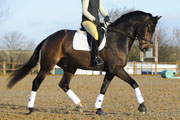 Trot
Trot
When looking to buy a horse, trot is, without a doubt, the leastimportant pace. People always want to see a really good trot. Personally, I would be looking for a more workman-like trot with lots of gears, and some good bend in the hindleg as it comes forward and up towards the horse’s belly. You want to be able to see a bit of knee action but you don’t want a ‘floaty’ trot. I would always advise people to look for a fairly ordinary trot that you can make into something brilliant.
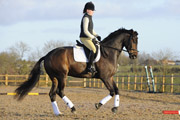 Canter
Canter
The canter needs to have a very regular three-beat tempo and, even when the horse slows down, you must still be able to see a bit of jump in the air. You don’t want to see the canter going flat across the ground.
Improving the paces
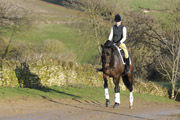 Walk
Walk
Walking is generally all about relaxation and problems in the walk are most commonly associated with tension through the horse’s back. I find that hacking is a good way to help this – and especially hacking up hills. Try taking your horse for a hack with another horse who really strides out. This will encourage him to stretch out and keep up, which is great for the walk.
Pole work is also a good way to help your horse improve his walk. To start with, just lead him over three or four poles, but double the distance between them to begin with – sometimes horses can see poles as a block and think the easy option is to jump them, so by doubling the distance, what they’re being asked to do is made a little clearer. I also think it’s best to lead the horse over the poles first, before riding, because this way you can be there to guide him over. When you move on and start riding him over the poles, make sure you take a light seat so that when he lifts his back it’s free to move.
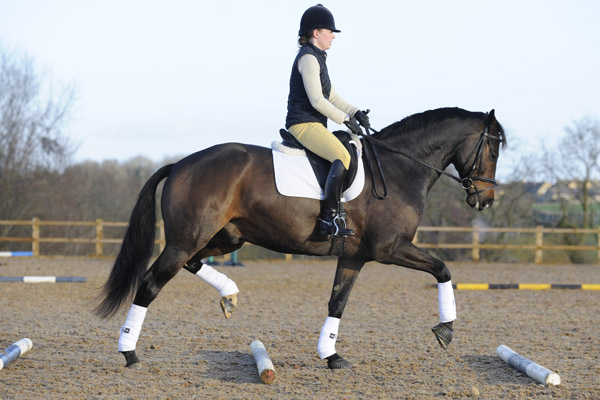 Trot
Trot
The trot is easiest to develop – a lot can be improved – but the key is not to rush it. If the trot doesn’t come naturally to your horse, don’t push for it. Your job is to help enhance the pace. You need to work towards an active trot by encouraging your horse to spend more time in the air without causing him to be too expressive.
A great way to do this is by using loads of transitions because riding through lots of gears helps to get that activity you’re looking for. For the same reason, lateral work can also be helpful because it makes the hindlegs work quicker, and trotting poles can be used to get a little more air time.
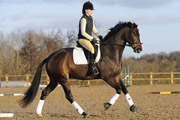 Canter
Canter
Using transitions is a great way to get the horse working quicker in front of the leg. But, again, don’t be tempted to let him get too fast over the ground – you want more time in the air but not to get him running.
So, when you’re working in canter, always check that the hindleg is coming through and that he’s holding his regular three-beat tempo. If it starts to feel untidy you need to get him moving forward.
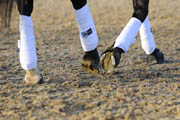 ver-tracking
ver-tracking
In walk, trot and canter, when the horse is working forward and coming through from behind, the hind foot should tread into the print of the front foot. This is over-tracking.
In walk, and particularly in free walk, you would want to see the horse’s hindlegs really coming through from behind and sometimes they can over-track by up to 12 inches (30.5 cm). In medium walk the step is shorter but you should still expect to see some over-track. The mechanics of the horse’s hindlegs mean that they should come up and forwards toward the horse’s belly. Therefore, overtracking indicates that the horse is using his hindquarters correctly and not dragging himself along. It’s important – particularly in the working, medium and extended paces – but there is, however, lots of debate on whether horses should over-track in collected work.






